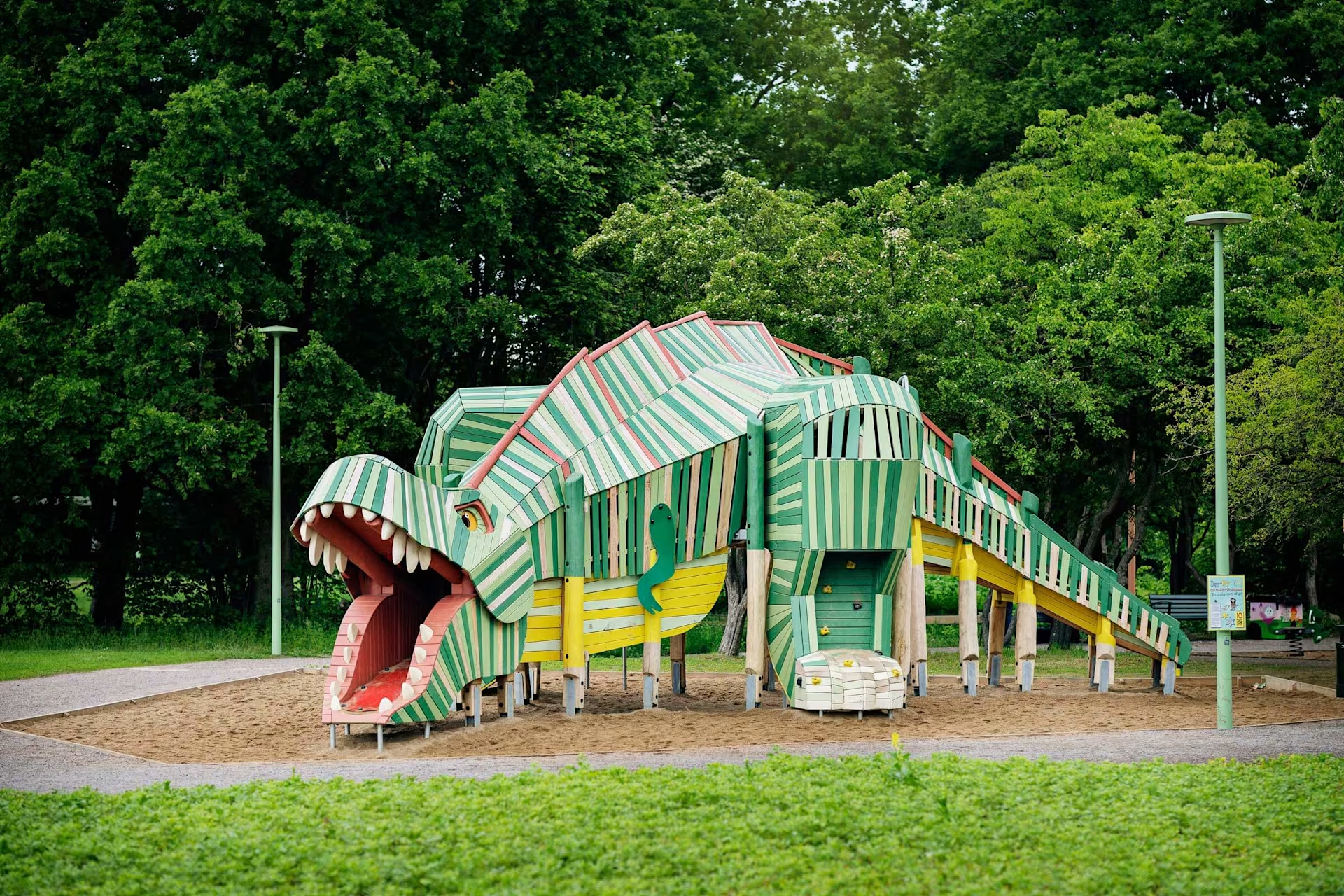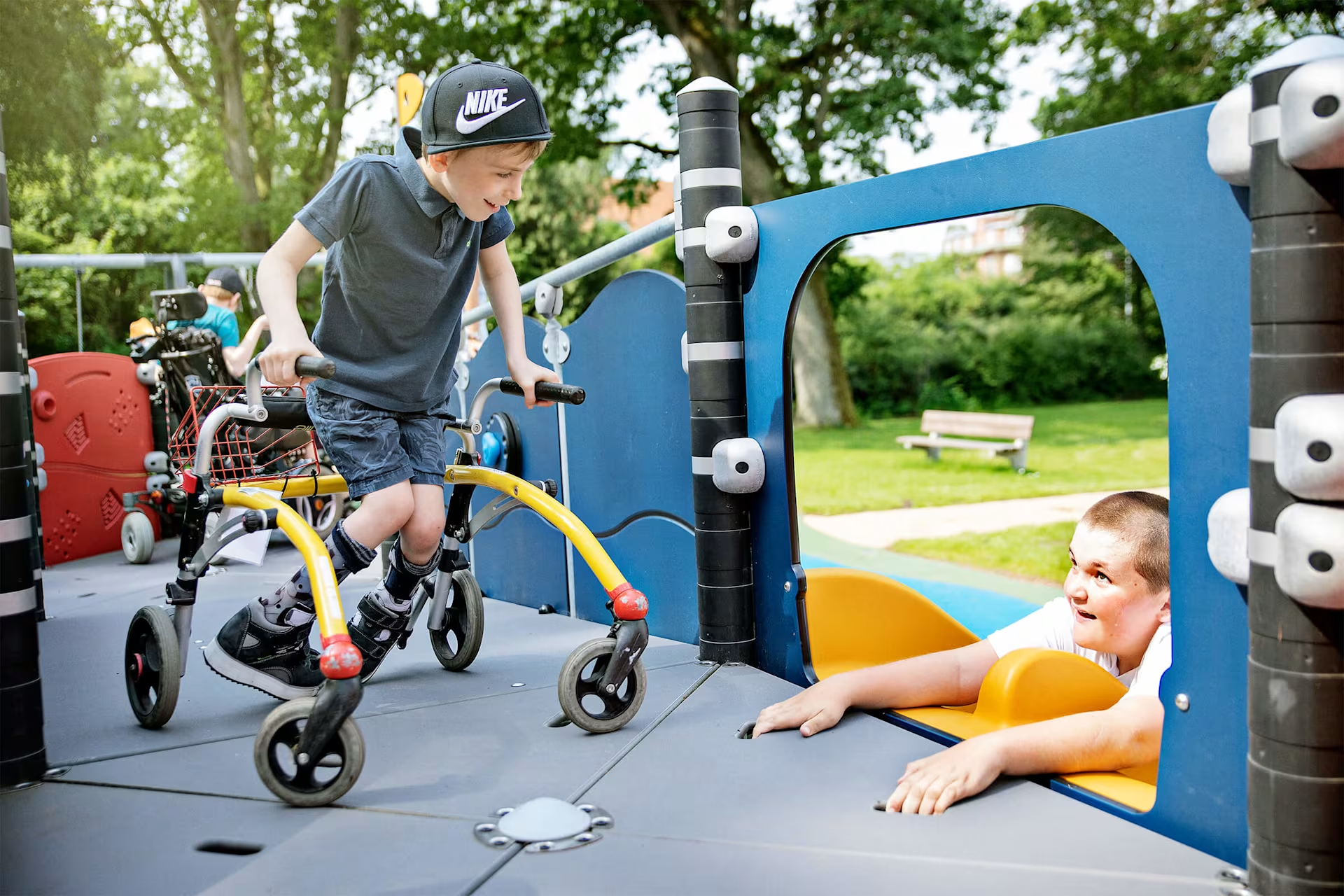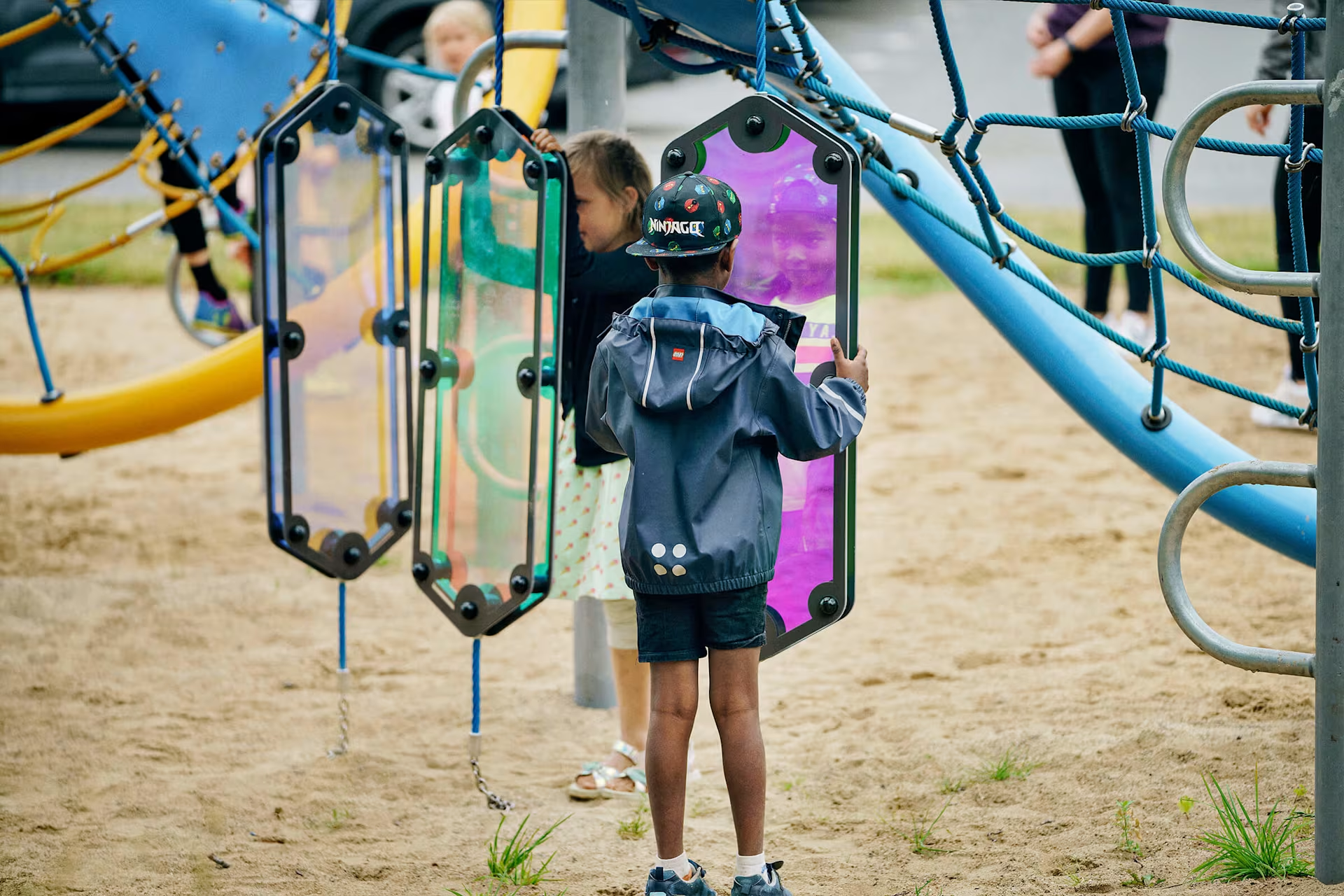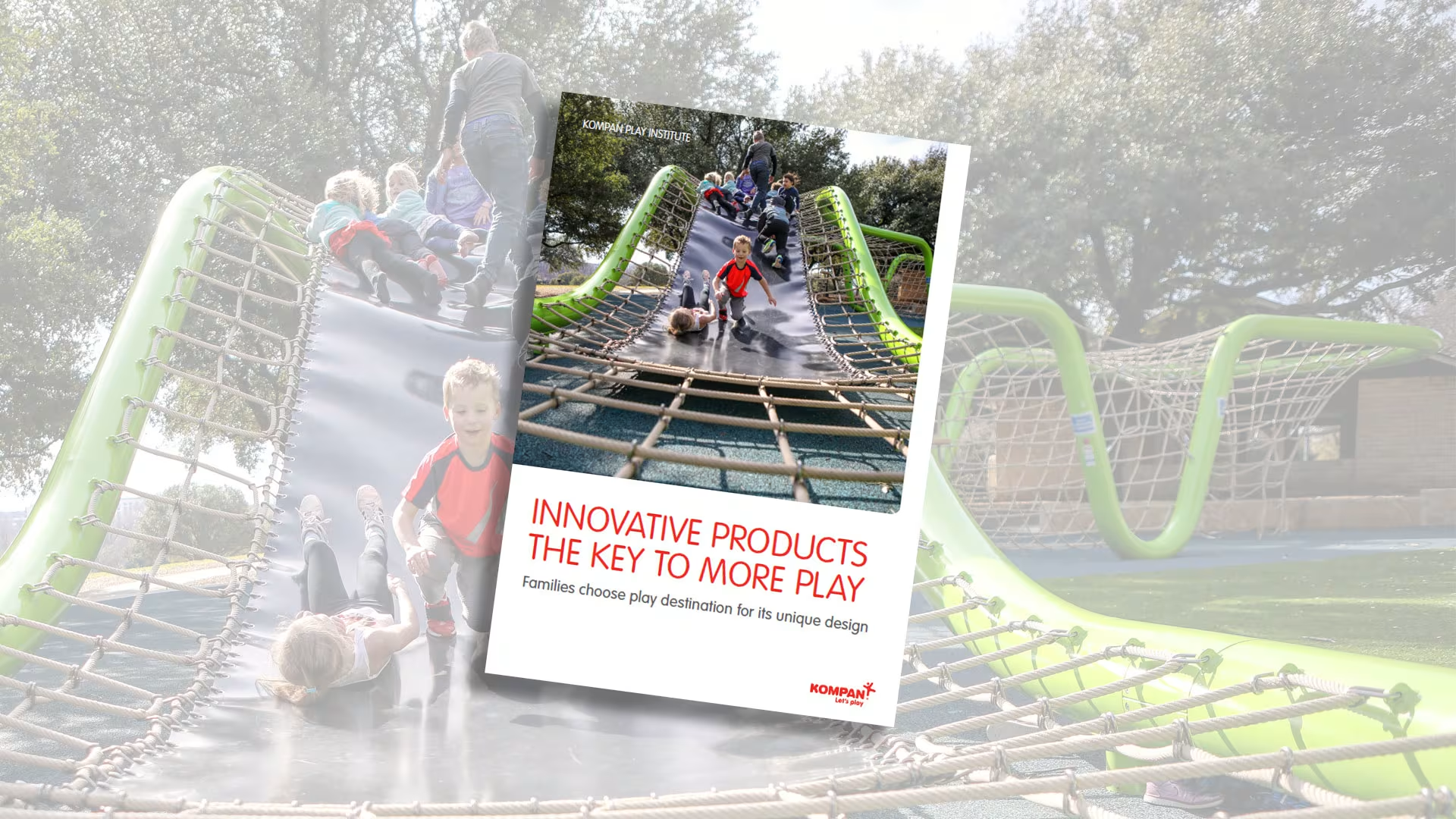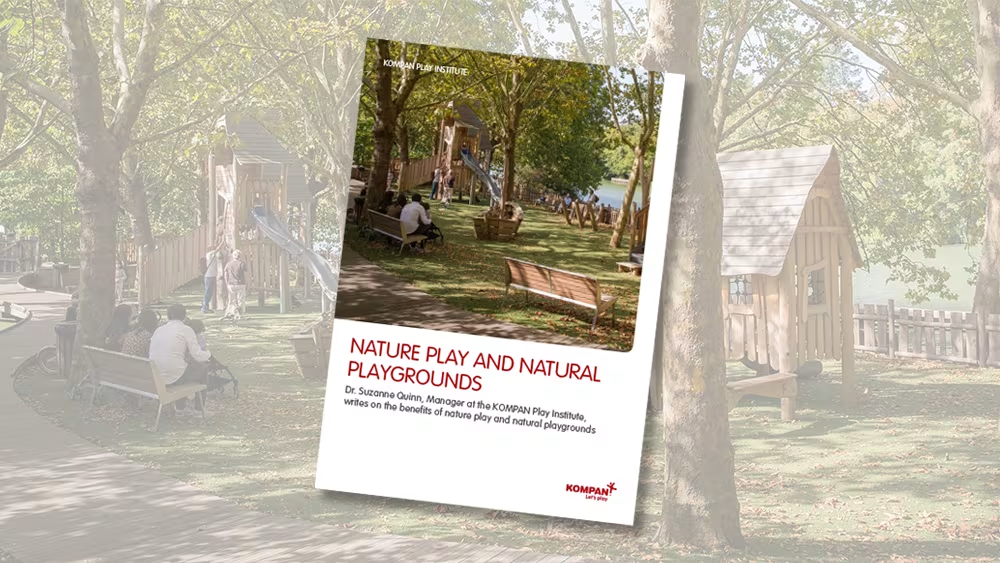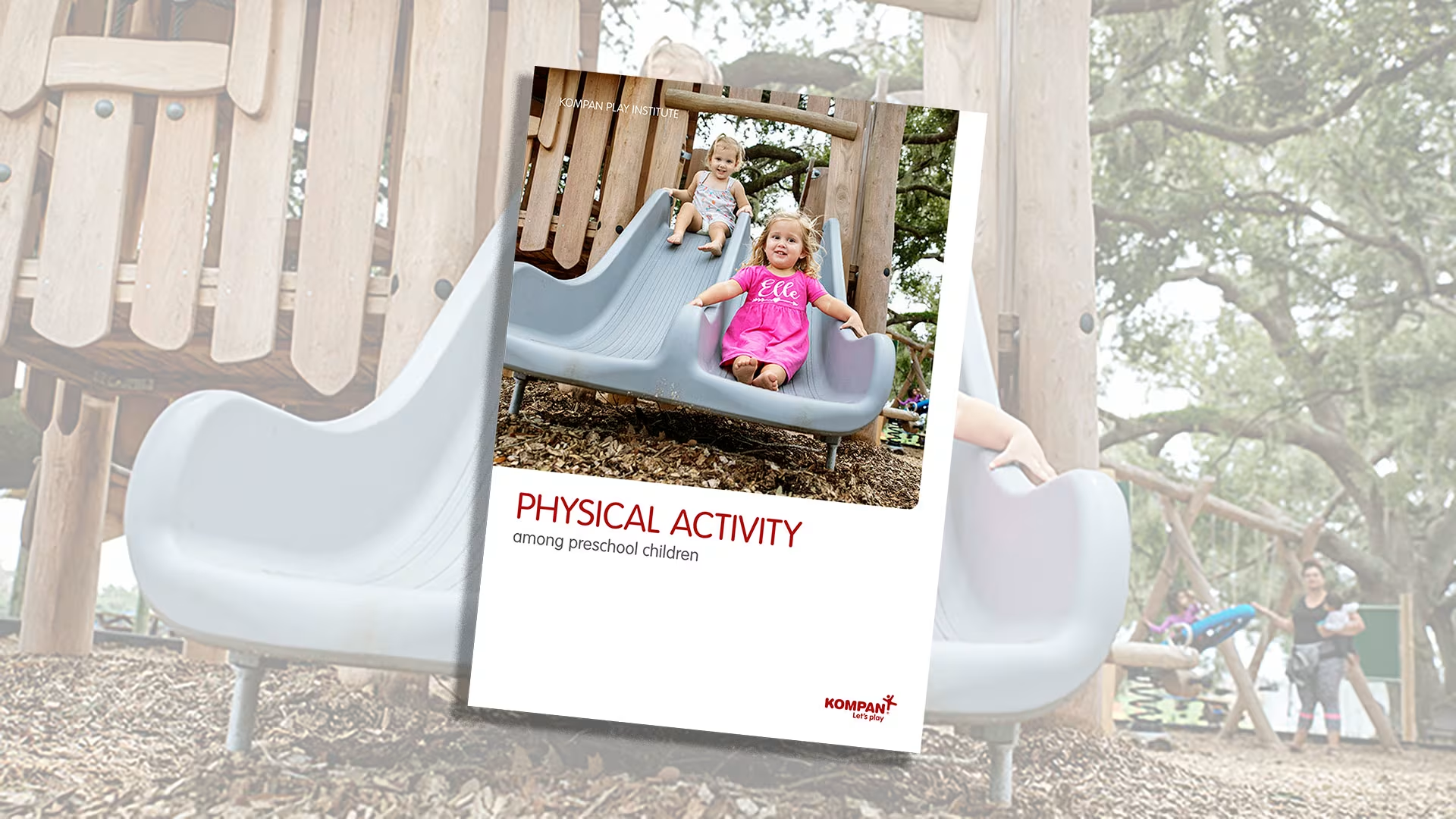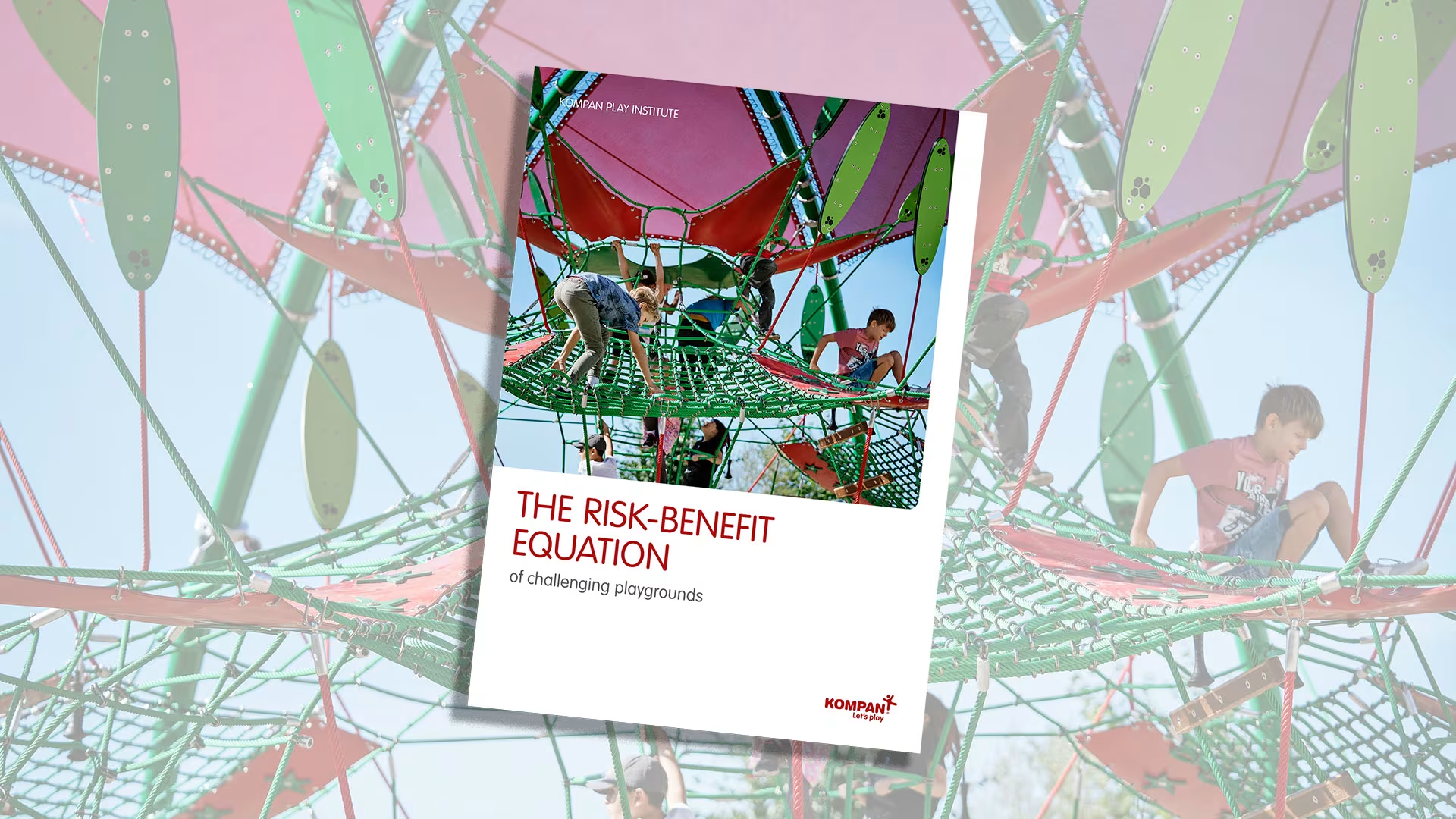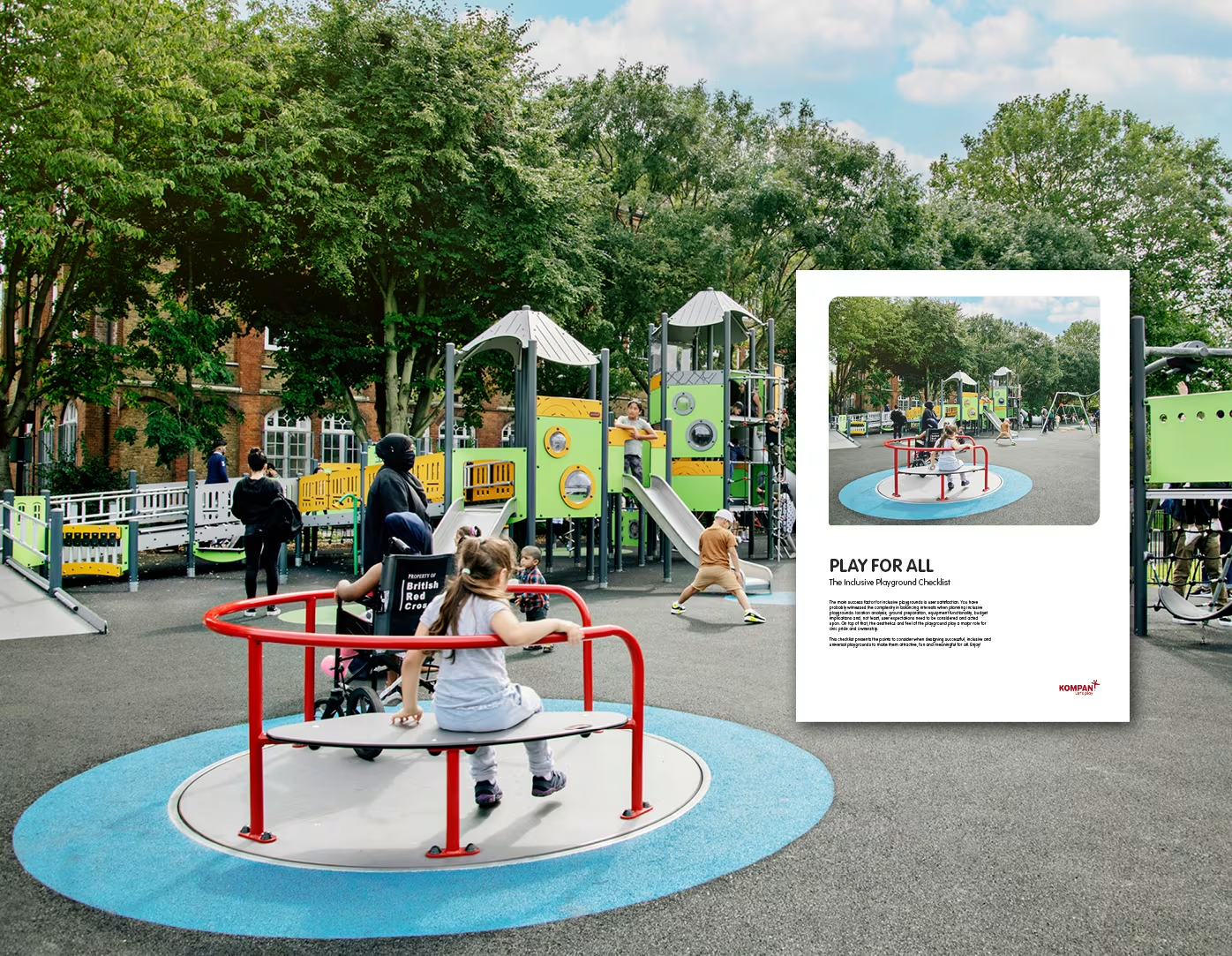White paper
Equality in play - Survey on playground use in children with disabilities

Survey on playground use in children with disabilities
Play between children with disabilities and typically developing children supports the areas of self-efficiency, tolerance, and empathy in both user groups. However, research shows that children with disabilities have severely reduced access to playgrounds in comparison to their able-bodied peers.
This survey from the KOMPAN Play Institute discovered that 71% of the wheelchair users found their nearest playground to be inaccessible. Additionally, the survey provided insight into the preferred play activities of children with disabilities.
Playgrounds are well-known motivators for effectively getting children to be physically active, in a fun way. However, in order for this to be true for children of all abilities, playgrounds need to be equally accessible and interesting to both groups.
4 considerations for equality in play
For increasing the frequency of use, local playgrounds should be accessible.
Playgrounds generally should have accessible surfacing. This additionally helps caregivers or grandparents with mobility impairments who bring children to the playground.
Playgrounds should have accessible play equipment that is usable for children with disabilities. A KOMPAN Play Institute study shows that this means ground-level based activities.
Playgrounds should have a variety of activities available for the whole family in order to make the site more enticing to visitors.



